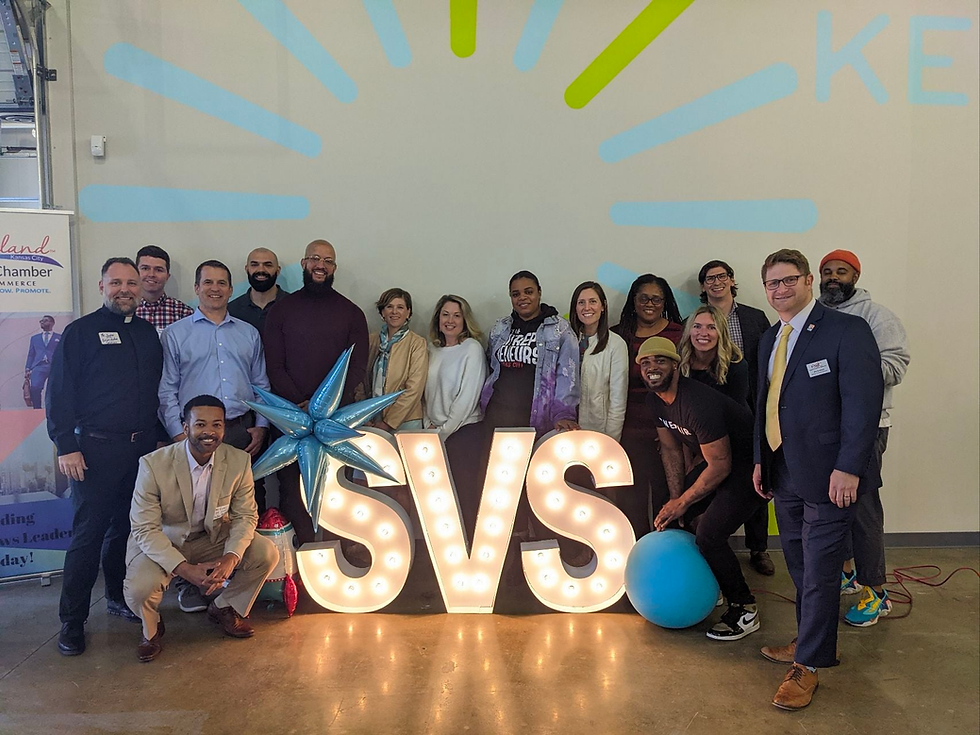Keystone Community Corporation announces the Keystone Innovation District in Kansas City, Missouri
- KCC

- Feb 22, 2019
- 4 min read
With a focus on education, entrepreneurship and employment, regional collaboration and programming will drive the success of this new district, bringing a broad group of world class institutions into a single location.
Across the country, innovation districts have become hubs for education, research and partnerships with a focus on activities that create economic prosperity over the long term. Cities across the country are competing to attract, create and retain the talent and businesses to support economic growth in the emerging knowledge economy. Cities like Detroit, Atlanta and St. Louis have seen success in creating these geographically compact and connected districts as a catalyst for innovation and growth.
Kansas City has long had organizations focused on innovation, whether in their own industries or across broader categories such as entrepreneurship. However, the nature of Kansas City’s far-reaching geography and many divisions have left many of these individual initiatives without the scale or density required to drive transformational growth. Scale is an important factor in the competition between regional and national cities for talent and resources and Kansas City must manufacture scale in these areas.
“Kansas City has become nationally known as an ideal community where innovative ideas are welcome and entrepreneurs can thrive,” says Kansas City Mayor, Sly James. “A vibrant innovation district is essential to becoming the center of innovation not just for our state, but for the entire Midwest."
In his recent experiences launching a corporate accelerator in the Kansas City Crossroads area and leading a growth-stage technology company in Kansas City, Kevin McGinnis has seen the impact corporate participation and scale can have on the region’s innovation ecosystem. McGinnis noticed the region lacked a destination which enabled people to collaborate at scale on a daily basis causing Kansas City to lose pace economically when compared to peers. This was a primary motivation to lead this collaborative effort and create the Keystone Community Corporation, a non-profit entity that will oversee partnership development and programming in the Keystone Innovation District.
The slowness of the region’s economic growth was confirmed when KC Rising published their findings earlier this year comparing Kansas City to other peer metropolitan cities. With the help of major civic organizations supporting the KC Rising initiative, the Keystone Innovation District vision has moved from concept to reality at an accelerated pace, but more needs to be done.
“KC Rising has identified innovation districts as a key strategy in helping us gain ground on our 30 peer regions,” said KC Rising co-chair Bill Gautreaux. “The idea is to create a place where entrepreneurs, research institutions, students and corporations can collaborate privately and publicly to generate economic impact and workforce readiness.”
McGinnis has visited more than 10 innovation districts across the country, and with input from experts developing and operating districts in other cities, they have outlined key factors that impact the success of these districts.
These districts thrive with the participation of regional anchor institutions, including universities, corporations and entrepreneurial programs. Several institutions are interested in being part of this collaborative center; they include the University of Kansas, the University of Missouri, the University of Missouri – Kansas City and William Jewell College. Having the support of these initial educational institutions is important as they can potentially bring research, student experience programming and workforce development assets to the innovation district.
To enable people to participate in the strongest growth areas in our economy, and bridge the gap between industry and workforce development, a dual investment in infrastructure and human capital is required.
Another factor in creating successful innovation districts is focusing on and building around the strengths of the region. Building around Kansas City industries like global design, transportation and logistics and smart city assets will be important, but including a wide range of industries will also drive more innovation. Emphasizing transportation is about more than innovation as it is also a major contributor to the success of these innovation districts. Keystone plans to work closely with the Kansas City Area Transportation Authority and believes their vision and leadership will be felt throughout the district.
“We look forward to building relationships with Keystone District partners,” said Robbie Makinen, KCATA president & CEO. “Together we’ll explore possibilities that advance innovative transportation options for the next 20 years, not the last 20.”
Location is also one of the most important considerations enabling innovation districts to thrive especially when connected to the existing cultural and creative hubs of a region. When looking at the Kansas City region, McGinnis evaluated more than 10 potential locations. The 18th street corridor proved to be ideal as it has the potential to connect two creative hubs in the city — 18th and Vine and the Crossroads. Not only does it add to the momentum in these two neighborhoods, it also facilitates an important east-west connection in the ongoing urban revitalization efforts of the city.
As a transformational endeavor, innovation districts have the ability to connect regional assets and attract new external investment as they are developed over decades, not years. The plan and vision for the Keystone District is no different. Broad civic, education and corporate support for programs focused on innovation promise to bring this vision to life.
###




Comments